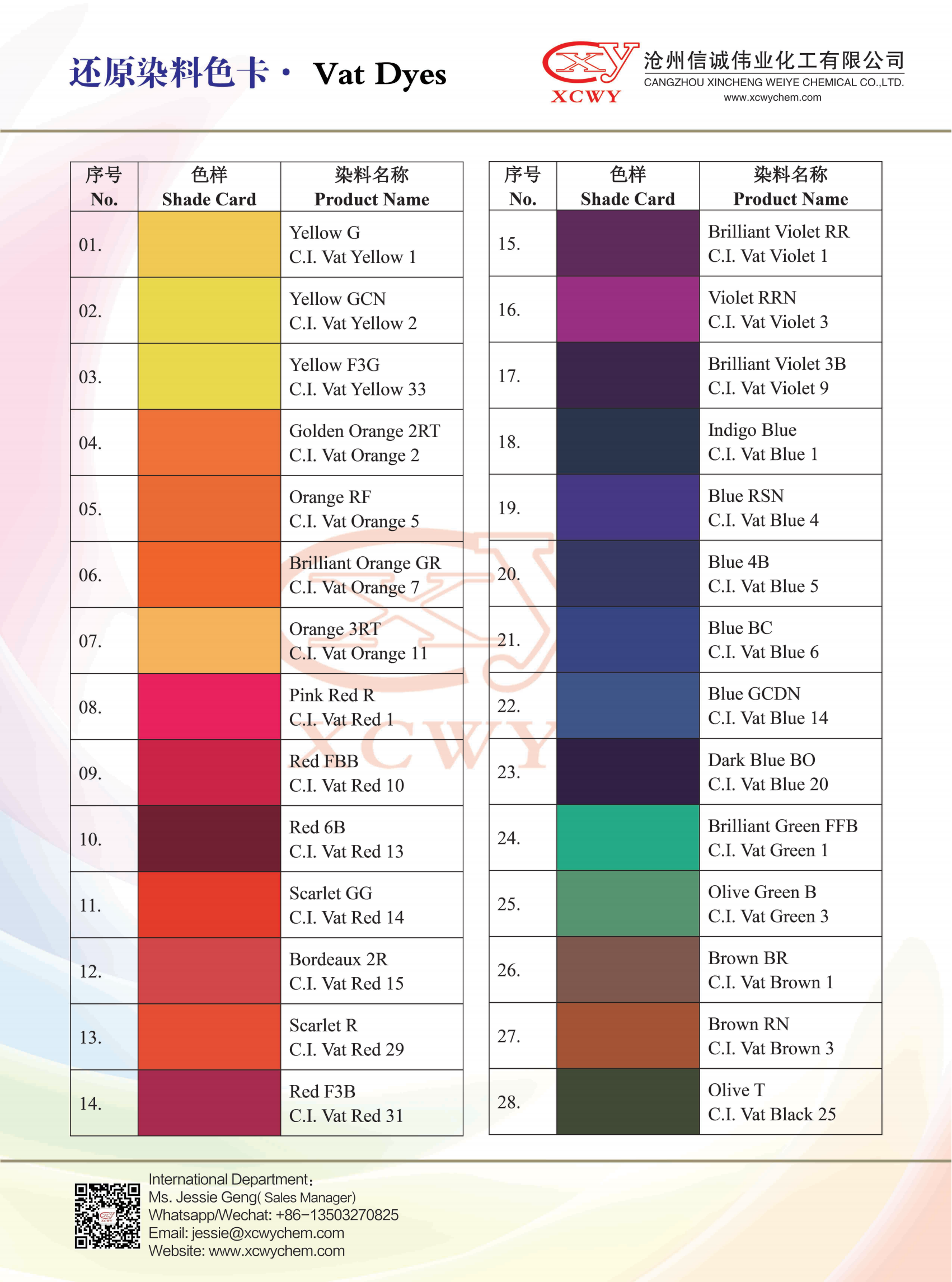Testing vat dyes is a systematic process aimed at evaluating their dyeing performance, quality stability, and fastness characteristics. This usually includes tests for strength (strength), color, dyeing performance, and various color fastness.
Chemical preparation:
·Reducing agent: Sodium hydrosulfite (Na ₂ S ₂ O ₄).
·Alkali agent: caustic soda (sodium hydroxide, NaOH).
·Other: soap detergent, penetrant, etc.
Reduction process (dry cylinder reduction method):
1. Mix the dye into a paste with a small amount of warm water (<60 ° C).
2. Add the specified amount of caustic soda and sodium hydrosulfite, and dilute with a small amount of warm water.
3. Reduce at the specified reduction temperature (such as 50-60 ° C) for 10-15 minutes, and the solution should become a transparent dark colored body fluid (if the reduction is not sufficient, it may become cloudy or suspended).
Dyeing process:
1. Heat the dye bath to the specified dyeing temperature (such as 50 ° C, 60 ° C, depending on the type of dye).
2. Place the pre wetted fabric sample into the dye bath;
3. Stain for 30-45 minutes, constantly flipping during this period.
4. Take out the fabric sample, squeeze it dry, and oxidize it. Oxidation can be carried out in air (cold or hot air), or treated with oxidants such as hydrogen peroxide (H ₂ O ₂).
5. After oxidation, rinse thoroughly with water and then boil with soap (2g/L soap detergent, above 95 ° C, 10-15 minutes) to remove floating color and restore the correct color of the dye.
6. Hot water washing, cold water washing, and drying.
Testing precautions
1. Standardization: All tests must be conducted under completely consistent conditions (same batch of fabric, same water quality, same equipment, same process), otherwise the results will not be comparable.
2. Stability of insurance powder: Insurance powder is highly susceptible to moisture and decomposition, and must be sealed and stored in a cool, dry place. Invalid insurance powder can lead to insufficient restoration, resulting in defects such as color spots and light colors.
3. Reduction conditions: Different reduction dyes have the most suitable reduction temperature (if special reduction dyes require higher temperatures), which needs to be adjusted according to the dye manual.
4. Oxidation conditions: Some dyes are sensitive to oxidation conditions and require strict control of the concentration and temperature of the oxidant.
5. Recording: Detailed recording of each experimental step and parameter is the basis for analyzing problems and reproducing results.
Contact person: Miss Jessie Geng
Email:jessie@xcwychem.com
Mobilephone/Whatsapp: +86-13503270825
Post time: Sep-12-2025






